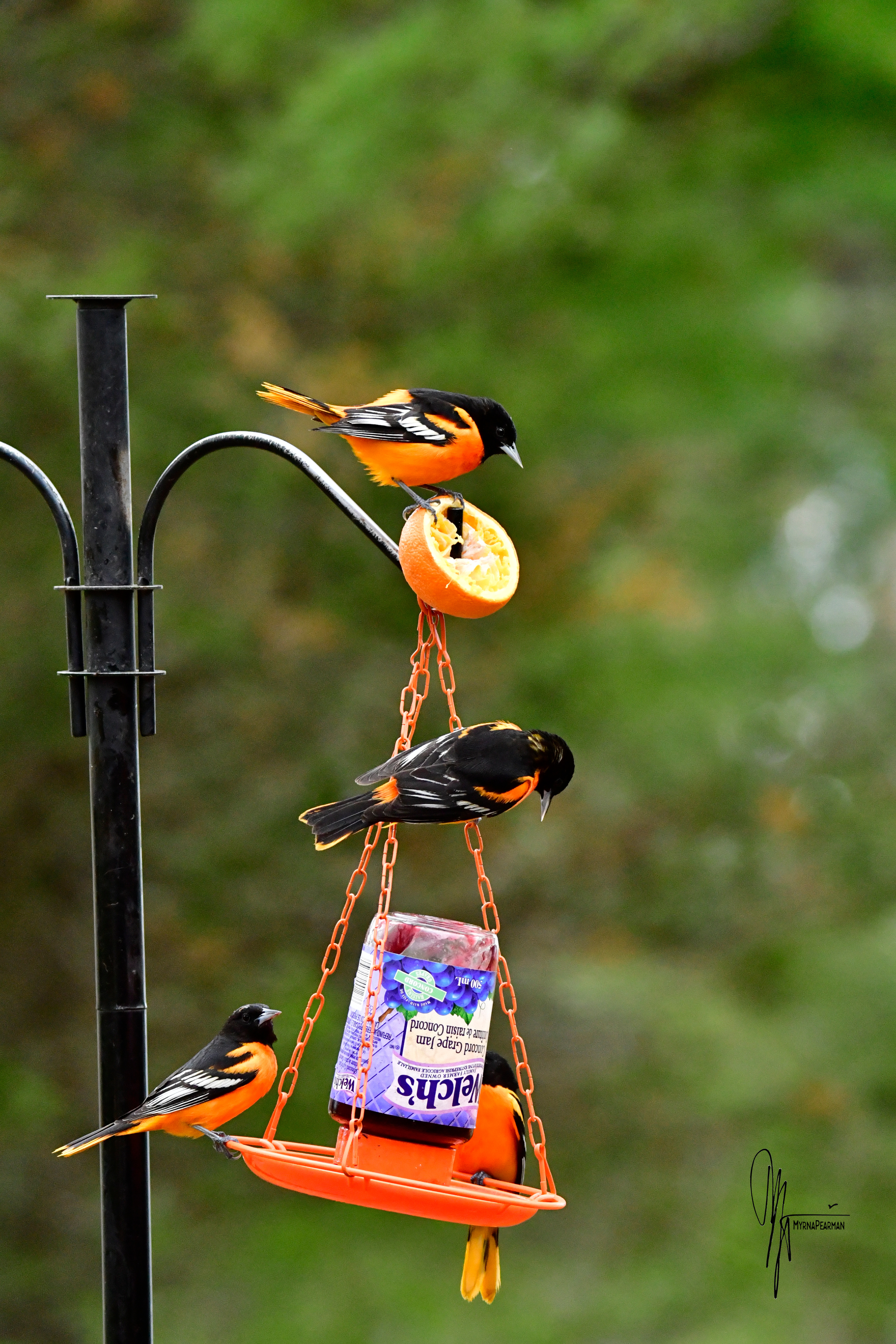(800) 563-7333
July 21, 2023 | Myrna Pearman, Chin Ridge Seeds (en-CA)

This article is part of our "Ask Myrna" Backyard Bird Feeding Series.
I highly recommend feeding birds during the summer months. The exception would be, of course, in areas where it is illegal (e.g., some National Parks) or where there is a risk of attracting bears. Otherwise, summer bird feeding adds great interest to any yard or garden because it attracts colourful and interesting bird species and provides new opportunities to observe bird behaviour, including courtship, nesting, and the feeding of young.
The best way to attract and encourage birds to frequent your yard is to Naturescape: i.e., by providing habitat through the provision of space within which animals can find food, water, and shelter. Bird feeders complement natural food sources such as insects, nectar, fruit, and berries. Choose perennials and annuals that are beneficial to both pollinators and birds and try to ensure that at least some species are in bloom throughout the season. Complement these plantings with a water source and be sure that the birds have adequate shelter (shrubs/trees/brush piles).
The core of a summer bird feeding program should include sunflowers, either shelled or unshelled. The advantage of shelled sunflowers, especially medium chips or high-quality sunflower-nut blends such as Mother Nature’s No Mess Garden mix, is that there is minimal wastage and mess. Who wants piles of sunflower hulls on their lawn!
Peanuts, either in the shell or shelled, are also attractive to a wide variety of resident species, especially jays and woodpeckers.
Suet will also be eaten year-round by our resident chickadees, nuthatches, and woodpeckers. Raw suet tends to melt and go rancid, so commercial suet blocks dispensed from metal suet cages are inexpensive and a mess-free way to offer suet during the warm months.
Hummingbirds are the most “prized” of all summer birds. Growing plants that they prefer (e.g., delphinium, maltese cross, scarlet runner beans, and fuschia) will almost guarantee their presence. They will also be readily attracted to feeders that offer a 1:4 sugar water solution. Do not use honey or brown sugar, avoid commercial mixes, and replenish the solution regularly.
Baltimore Orioles are another summer specialty. These brilliant orange and brown songsters have a sweet tooth and will readily come to feeders that offer orange halves, grape jelly, or sugar water dispensed from either large hummer feeders or special oriole feeders. They will also devour sunflower chips.
Fruit, jelly, and hummer feeders might also attract other species, such as Gray Catbirds and Rose-breasted Grosbeaks, Hairy Woodpeckers, House Finches, and Yellow-rumped Warblers.
Other brightly colored summer songsters that are readily attracted to backyard feeders, especially those that offer sunflower seeds/mixes include American Goldfinches, Purple Finches, Western Tanagers, and Rose-breasted Grosbeaks.
Some of the other species that will occasionally visit summer feeding stations—especially our native sparrows— might not be brightly colored, but they are no less interesting. Challenge yourself to study the smallish brown birds that appear: you will likely be surprised at the variety of species there are.
One of the most interesting rewards of feeding the birds in summer is that some species will bring their fledglings into feed!! Watching the feeding process is interesting, as the young exhibit begging behaviours, and the adults dutifully feed them. The young birds also learn where good food sources are, something they will remember during the cold months ahead. The oft-touted worry that birds will totally stop feeding their young insects if seeds or nuts are available is unfounded. Birds are intelligent creatures and will continue to feed their nestlings a normal diet. By attracting these birds with supplemental offerings, you are actually encouraging them to stay close while they hunt for insects, including harmful insect pests. It is a win-win. They provide important environmental services while you get to enjoy their beauty and song!
